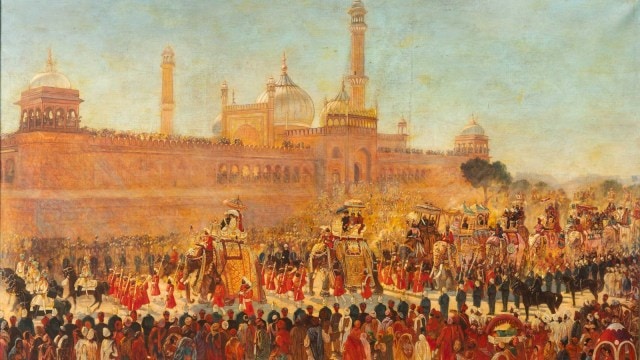Multi-art festival delving into Delhi’s glorious, layered past to begin in city on Saturday
Titled ‘The City as a Museum’ , the event will go on till September 21
 Delhi edition of the festival will continue till September 21
Delhi edition of the festival will continue till September 21On the edges of Old Delhi — not far from Kashmere Gate — is the near-forgotten garden complex of Qudsia Bagh, named after the begum who built it in the 18th century. Wife of Emperor Muhammad Shah and mother of Emperor Ahmad Shah, she envisioned the garden with pavilions, pools and water channels. A royal sanctuary for years, it inspired both Indian and European artists. Within its grand grounds, an exhibition of Indian crafts was held to commemorate the Coronation Durbar of Edward VII in 1902-03.
On September 6, historian and author Swapna Liddle will recall a few segments from this glorious past, particularly the 1902-03 exhibition. The event will also mark the beginning of the art and heritage festival, ‘The City as a Museum’, which will go on till September 21. Organised by DAG, the multi-art festival is already an annual feature in Mumbai and Kolkata.
The Delhi edition will see a series of exhibitions, walks, performances and discussions across ten locations, delving into Delhi’s layered past and re-imagining the cultural map of the city. “Travelling across historic sites and intimate spaces in the city — from monuments, museums and nature sanctuaries to artists’ studios and homes — which are inextricably connected to the rich histories of Indian art, the festival seeks to unearth fresh perspectives through a range of creative and immersive formats … We envision the city not as a repository of relics, but as a living terrain where past and present meet in conversation, mediated by the art that is produced,” says Ashish Anand, CEO and Managing Director, DAG.
On September 12 theatre director Amitesh Grover will lead an immersive audio walk around Mandi House; on September 13 at Triveni Kala Sangam photographer Ram Rahman, theatre director Zuleikha Chaudhari, social anthropologist Sarover Zaidi, artist and scholar Shukla Sawant and Grover will discuss Mandi House’s institutions and how their architecture has shaped aesthetics and collective memory.
Dating back to the 1960s, the iconic Daryaganj Sunday Book market will be the subject and the location for a morning walk with author Kanupriya Dhingra and historian Sohail Hashmi on September 7. “While the Kolkata and Mumbai editions revisit the colonial period and its impact on Indian art and culture through critical perspectives, in Delhi, the relationship between art and the nation acquires a further dimension as it became a site for producing cultural narratives for people and traditions across the country, especially in the years after Independence. While important art institutions and state-led initiatives helped frame these meanings, it was not limited to the activities of the state and its bureaucrats. Artists were active participants in these dialogues to shape the landscape of culture…,” adds Anand.
Weaving Delhi’s history and its various periods together will be the central exhibition ‘Sair-e-Dilli: Chronicles of Change’ at Bikaner House, accompanied by an eponymous book. Curated by Liddle, the select artworks from the DAG collection show Delhi of the past. The numerous photographs of Old Delhi, for instance, include a panoramic view from Jama Masjid by Italian-British photographer Felice Beato from before the demolitions that took place around the mosque in the early 1860s.
In a section dedicated to Red Fort we wander through its interiors and view it from a distance in the wall works; we are informed of the numerous reconstructions that took place over the centuries, for instance a Gordon Sanderson lithograph from 1912 details reconstruction efforts during the period.
Delhi beyond Shahjahanabad’s bustling streets also finds representation — from the Ridge, that the book notes was used in the 19th century by the British “as an extension to the city — adding isolation mansions and a cantonment”, to Humayun’s Tomb where after years of neglect the tomb and its surroundings were repaired and re-landscaped by the Archaeological Survey of India in the late 19th century. Sections are also dedicated to Nizamuddin, Safdarjung Tomb, Tughlaqabad, Jantar Mantar and Mehrauli with its numerous monuments, including the Qutub Minar.
Among others is a 1933 ‘Tourist Map of Delhi’, Edwin Landseer Lutyen’s 1927 ink and graphite depicting the design of the ‘Formal Indian Garden’ that was later named Mughal Garden, as well as numerous photographs of the Parliament and Rashtrapati Bhavan from the ’40s and ’30s.
In the book notes: “New Delhi, while it was based on the very modern planning principles of the garden city, at the same time, referenced Delhi’s historic past…”







